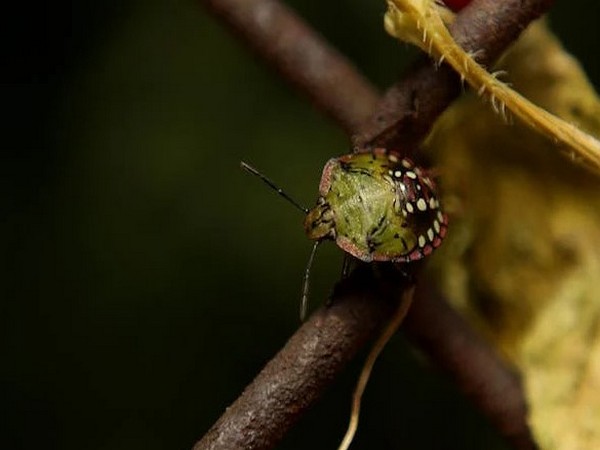Climate change has potential to greatly expand habitat of invasive stink bugs
With climate change, a foul-smelling, voracious, and widespread pest could become even more common.

- Country:
- United States
With climate change, a foul-smelling, voracious, and widespread pest could become even more common. According to a recent modelling study, changing weather conditions could increase suitable habitat for the brown marmorated stink bug in the United States by 70%. The research, which was published in Pest Management Science, is based on data from a three-year stink bug monitoring effort in 17 states, as well as several potential climate scenarios. However, whether the insects will thrive in new locations is dependent on the local conditions and potential mitigation measures.
"Every system will change as a result of climate change, so just because you can grow garbanzo beans, lentils, or wheat without these pests now doesn't mean you won't have them in a few years," said study lead author Javier Gutierrez Illan, an entomologist at Washington State University. "There are mitigating measures we can take, but it is prudent to plan for change." According to the study, there is a likely northward shift in stink bug-friendly conditions. The Mid-Atlantic, areas surrounding the Great Lakes, and West Coast valleys such as the Sacramento Valley in California and the Treasure Valley in Idaho may be particularly affected.
The brown marmorated stink bug is a herbivore that eats nearly 170 different plants, including crops and ornamental plants. This type of stink bug, which originated in Asia, first appeared in the United States about 20 years ago and has since spread coast to coast. It has been found in 46 states and is classified as a pest in 15 of them. Brown marmorated stink bugs are easily identified by homeowners because they prefer to spend the winter indoors. In fact, the study discovered that while proximity to populated areas appeared to help the insects establish themselves in new areas, once established, they did not require proximity to people to proliferate. Other factors, such as water availability, were more important for their abundance.
According to Gutierrez Illan, people are inadvertently transporting stink bugs in vehicles or farm equipment to areas where they would otherwise be difficult to reach by flying alone. Stink bugs dislike cold winters, but rising temperatures caused by climate change are not always beneficial if the land becomes too dry. They require water, so the researchers believe that changing precipitation patterns will influence where the stink bugs thrive.
Officials and researchers in some states, including Washington, are using a parasitoid insect known as the samurai wasp to control stink bugs. Inside stink bug eggs, wasps lay their own eggs. This not only kills the affected eggs, but the wasp larvae eat other developing stink bugs. Measures like these could help prevent or reduce stink bug spread into new areas, according to Gutierrez Illan. The researcher advised Washington growers to use WSU's DAS, or Decision Aid System, a web-based tool that provides information to help farmers prepare for changes in their agricultural systems, including the possible appearance of these pests.
Gutierrez Illan also advised growers to become acquainted with the brown marmorated stink bug by visiting sites such as stopbsmb.org, even if they have never encountered the pest in their fields. "Most growers learn from their parents or the previous generation, but the information they had is probably no longer as useful because the climate is changing," Gutierrez Illan explained. (ANI)
(This story has not been edited by Devdiscourse staff and is auto-generated from a syndicated feed.)
- READ MORE ON:
- Idaho
- Washington
- Asia
- United States
- West Coast
- California
- Javier
ALSO READ
Asian Markets Surge Amid U.S. Electoral Impact
Yokohama Paves the Way for Sustainable Urban Futures at Asia Smart City Conference
Asia's Resilience: Navigating Trump Era Trade Tensions
ADB, Central Asia Partners Unveil Climate Initiatives to Boost Resilience and Green Growth
Europe & Central Asia’s Economic Resilience and Challenges: Insights from the 2024 World Bank Report










